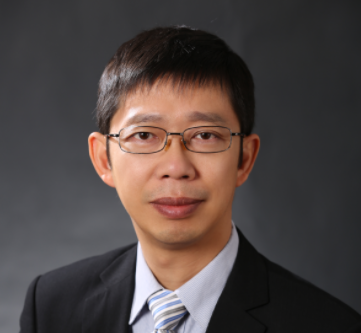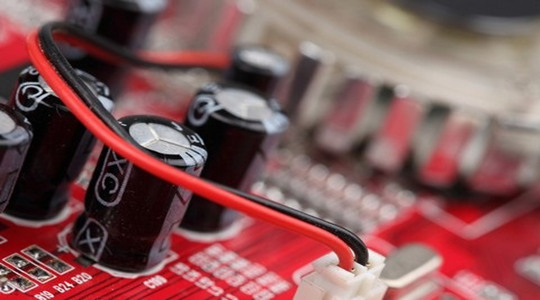
Principles of Electric Circuits 课程:前往报名学习

Electricity is everywhere. Learn about real world applications of electric circuits and the techniques for analyzing and designing circuits.
开设学校:清华大学;学科:工学、

Electricity is everywhere. Learn about real world applications of electric circuits and the techniques for analyzing and designing circuits.
-0 Math basics for circuits
-Exercise
-1 why learn circuits?
-Exercise
-2 circuits
-Exercise
-3 branch variables
-Exercise
-4 reference direction
-reference direction
-5 power
--power
--Exercise
-resistor
-Exercise
-7 independent source
-Exercise
-simulation1
-8 port
--port
-Exercise
-9 dependent elements
-dependent elements
-simulation2
-10 KCL KVL
-KCL KVL
-11 2B method
--2B method
-Exercise
-12 serial parallel resistors
--serial parallel resistors (1)
--serial parallel resistors (2)
--serial parallel resistors (3)
--serial parallel resistors (4)
-Exercise
-13 bridge
--bridge
--Exercise
-14 Y-Δ transform
--Exercise
-15 equivalent resistance of two-terminal network
--equivalent resistance of two-terminal network
--Exercise
-16 equivalent transform for sources
--equivalent transform for sources (1)
--equivalent transform for sources (2)
--equivalent transform for sources (3)
-Exercise
-17 maximum power transfer
--Exercise
-Exercise2
-18 Op Amps
--Op Amps
-Exercise
-19 Op Amps' model
-Exercise
-simulation3
-20 ideal Op Amp
-Exercise
-21 applications of Op Amps
-Exercise
-Exercise3
-22 digital system —— introduction
--digital system —— introduction
-Exercise
-23 digital system——number and logic in digital
--digital system——number and logic in digital(1)
--digital system——number and logic in digital(2)
-Exercise
-24 MOSFET
-Exercise
-25 logic gates
-Exercise
-26 CMOS
--CMOS
-Exercise
-27 two-port network
-Exercise
-28 G parameter
-Exercise
-29 other parameters
-Exercise
-30 equivalent circuits of two-port
--equivalent circuits of two-port
-Exercise
-31 connection of two-ports
-Exercise
-Exercise4
-32 introduction to systematic function formulating
--introduction to systematic function formulating
-Exercise
-33 node voltage method
-Exercise
-34 loop current method
-Exercise
-Exercise5
-35 superposition theorem
-Exercise
-36 Thevenin/Norton theorem
-Exercise
-37 applications of Thevenin theorem
--applications of Thevenin theorem(1)
--applications of Thevenin theorem(2)
--applications of Thevenin theorem(3)
-Exercise
-38 substitution theorem
-Exercise
-Exercise6
-39 nonlinear resistor
-Exercise
-40 analytical and graphical methods for nonlinear circuits
--analytical and graphical methods for nonlinear circuits(1)
--analytical and graphical methods for nonlinear circuits(2)
-Exercise
-41 piecewise linear method for nonlinear circuits
--piecewise linear method for nonlinear circuits(1)
--piecewise linear method for nonlinear circuits(2)
--piecewise linear method for nonlinear circuits(3)
--piecewise linear method for nonlinear circuits(4)
--piecewise linear method for nonlinear circuits(5)
-Exercise
-42 application of suppose-verify method
--application of suppose-verify method(1)
--application of suppose-verify method(2)
-Exercise
-43 small signal method for nonlinear circuits
--small signal method for nonlinear circuits(1)
--small signal method for nonlinear circuits(2)
--small signal method for nonlinear circuits(3)
-Exercise
-44 small signal models
--Exercise
-45 amplifier
--Exercise
-Exercise7
-46 Capacitors and Inductors
-Exercise
-47 Dynamic Circuits
--Exercise
-48 Initial Values
--Exercise
-49 Classical Method for First-Order Circuits
--Classical Method for First-Order Circuits(1)
--Classical Method for First-Order Circuits(2)
--Classical Method for First-Order Circuits(3)
--Classical Method for First-Order Circuits(4)
--Classical Method for First-Order Circuits(5)
--Exercise
-50 Three Elements Method for First-Order Circuits
--Three Elements Method for First-Order Circuits(1)
--Three Elements Method for First-Order Circuits(2)
--Three Elements Method for First-Order Circuits(3)
--Three Elements Method for First-Order Circuits(4)
-Exercise
-Simulation 4
-51 zero input response and zero state response
--zero input response and zero state response
--Exercise
-Exercise
-52 applications of first-order circuits (signal: gate propagation delay)
--Exercise
-53 applications of first- order circuits (signal: Op Amp circuits)
-Exercise
-54 applications of first-order circuits (energy: rectifying and chopping)
--Exercise
-unit step function and unit step response
--A1 unit step function and unit step response(1)
--A1 unit step function and unit step response(2)
--A1 unit step function and unit step response(3)
-Exercise
-unit impulse function
--Exercise
-unit impulse response
-Exercise
-convolution integral
-Exercise
-Exercise 9
-55 serial RLC second-order circuits
--serial RLC second-order circuits(1)
--serial RLC second-order circuits(2)
--serial RLC second-order circuits(3)
--serial RLC second-order circuits(4)
--serial RLC second-order circuits(5)
--serial RLC second-order circuits(6)
--serial RLC second-order circuits(7)
--serial RLC second-order circuits(8)
--serial RLC second-order circuits(9)
--serial RLC second-order circuits(10)
-Exercise
-56 parallel RLC second-order circuits
--parallel RLC second-order circuits
--Exercise
-57 intuitive method for second-order circuits
--intuitive method for second-order circuits(1)
--intuitive method for second-order circuits(2)
--intuitive method for second-order circuits(3)
--intuitive method for second-order circuits(4)
--intuitive method for second-order circuits(5)
--Exercise
-58 applications of second-order circuits
--applications of second-order circuits(1)
--applications of second-order circuits(2)
--applications of second-order circuits(3)
--Exercise
-Exercise 10
-59 sine wave
--Exercise
-60 power system
--Exercise
-61 phasor
-Exercise
-62 phasor form of KCL and KVL
--phasor form of KCL and KVL(1)
--phasor form of KCL and KVL(2)
--Exercise
-63 phasor relationship of RLC
--phasor relationship of RLC(1)
--phasor relationship of RLC(2)
--phasor relationship of RLC(3)
--phasor relationship of RLC(4)
-Exercise
-64 phasor method for sinusoidal steady state circuits
--phasor method for sinusoidal steady state circuits(1)
--phasor method for sinusoidal steady state circuits(2)
--phasor method for sinusoidal steady state circuits(3)
--phasor method for sinusoidal steady state circuits(4)
--Exercise
-Simulation 5
-65 instantaneous power
-Exercise
-66 average power
--Exercise
-67 reactive power and apparent power
--reactive power and apparent power(1)
--reactive power and apparent power(2)
--reactive power and apparent power(3)
-Exercise
-68 complex power
--Exercise
-Exercise 11
-69 frequency characteristics
--frequency characteristics(1)
--frequency characteristics(2)
--frequency characteristics(3)
-Exercise
-Simulation 6
-70 filter
--Exercise
-71 applications of frequency characteristics (low-pass characteristics of the small signal amplifi
--applications of frequency characteristics(1)
--applications of frequency characteristics(2)
--applications of frequency characteristics(3)
-Exercise
-72 resonance
--Exercise
-73 RLC resonance
--Exercise
-74 quality factor of serial RLC resonance
--quality factor of serial RLC resonance(1)
--quality factor of serial RLC resonance(2)
--quality factor of serial RLC resonance(3)
--quality factor of serial RLC resonance(4)
--quality factor of serial RLC resonance(5)
--quality factor of serial RLC resonance(6)
-Exercise
-75 LC resonance
--Exercise
-Exercise
-76 applications of resonance
--Exercise
-Exercise 12
-77 mutual inductance and mutual voltage
--mutual inductance and mutual voltage(1)
--mutual inductance and mutual voltage(2)
-Exercise
-78 dot convention
--Exercise
-79 application of mutual inductance (power and signal)
--application of mutual inductance
-80 decoupling equivalence of mutual inductance
--decoupling equivalence of mutual inductance(1)
--decoupling equivalence of mutual inductance(2)
--decoupling equivalence of mutual inductance(3)
--decoupling equivalence of mutual inductance(4)
--Exercise
-81 air-core transformer
--Exercise
-82 unity-coupled transformer
--Exercise
-83 ideal transformer
--Exercise
-Simulation 7
-Exercise 13
-84 three phase source
--Exercise
-85 balanced three phase load and balanced three phase circuit
--balanced three phase load and balanced three phase circuit(1)
--balanced three phase load and balanced three phase circuit(2)
--Exercise
-86 analysis of balanced three phase circuit
--analysis of balanced three phase circuit(1)
--analysis of balanced three phase circuit(2)
--Exercise
-87 power in three phase circuits
--power in three phase circuits(1)
--power in three phase circuits(2)
--power in three phase circuits(3)
--Exercise
-88 Fourier series for periodical signal
--Fourier series for periodical signal
-Exercise
-89 effective value and average power for periodical signal
--effective value and average power for periodical signal(1)
--effective value and average power for periodical signal(2)
--Exercise
-90 steady state analysis of circuits with periodical excitations
--steady state analysis of circuits with periodical excitations
--Exercise
-Exercise 14
-Final Exam
于歆杰,清华大学电机系党委书记,教授,中国电机工程学会电工理论与新技术专委会副主任委员,中国电工技术学会电磁发射技术专委会副主任委员,教育部高校在线教学国际平台与课程建设专家顾问组副组长,教育部高等学校工科基础课程教指委秘书长,教育部教学信息化与教学方法创新教指委委员,教育部在线教育研究中心智慧教学实验室主任,清华大学在线教学指导专家组组长,国际电磁发射杰出贡献Peter Mark奖章、北京市教学名师奖、清华大学首届新百年教学成就奖和宝钢优秀教师奖获得者,清华大学首门慕课、标杆课、国家级精品资源共享课、国家级精品在线开放课“电路原理”负责人。
清华大学电机系 博士,教授,副系主任,北京市教学名师。长期从事“电路原理”课程教学工作。以第一、第二作者身份完成教材或教辅用书6部,发表科研和教学论文40余篇。合作录制的清华大学首门MOOC课程——“电路原理”, 2017年被评为首批“精品在线开放课程”。先后获得清华大学“青年教师教学优秀奖”、清华大学青年教师教学基本功一等奖、北京市青年教师教学基本功一等奖、北京市教育创新标兵、宝钢优秀教师奖。2016年获“清华大学教学成果特等奖”(2/5),2017年获“第4届大中华区MOOC研讨会”金奖(“课程应用与推广”类),2017年获得“北京市教学成果一等奖”(2/5),2019年获得“清华大学教学成果一等奖”(第一完成人)。
陆文娟,教授,国家级精品课“电路原理”原负责人。主讲《电路原理》,参加编写出版的教材有8本。曾获第四届北京市高等学校教学名师奖,全 国宝钢优秀教师奖,北京市优秀教师称号,清华大学教书育人奖和研究生“良师益友”称号等。曾获北京市教育教学成果二等奖,清华大学教学成果一、二等奖多次。Professor Wenjuan Lu teaches the nationally recognized Principles of Electric Circuits. She has published eight textbooks and is a recipient of the Beijing Higher Education Outstanding Teacher Award.
赵伟,原苏联技术科学副博士,教授,博士生导师。主讲《电路原理》、《电磁测量选论》、《虚拟仪器基础》、《LabVIEW编程与虚拟仪器 设计》等课程,出版有《电磁测量》、《电工理论基础》(译)等教材,发表教学研究文章9篇。曾获教育部科技进步二等奖2项、中国电力科技进步三等奖1项、 中国石油和化工工业科学技术二等奖1项;国家政府特殊津贴;国家电网公司科技进步二等奖。
刘秀成,男,博士,副教授。1996年8月至1997年12月到香港理工大学访问。主讲本科生《电路原理》和工程硕士《电路与系统》课程。 作为主编或参与编写教材、教学参考书、电子课件、专著等10余部。发表教学研究文章4篇。获校级以上个人和集体奖励10余项,指导的硕士研究生有2人获清 华大学优秀硕士论文,是“清韵烛光”第二届清华大学“我最喜爱的教师”之一。
沈瑜,博士,副教授。2011.8-2012.8,在UC Irvine访问学者一年。主讲课程:《电路原理》、《面向对象程序设计》、《软件编程项目训练》。获奖情况:曾获2002年教育部科技进步奖二等奖、 2007年清华大学林枫辅导员奖、2008年清华大学教学成果一等奖。


